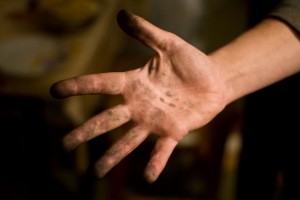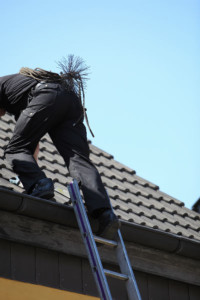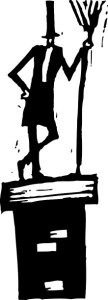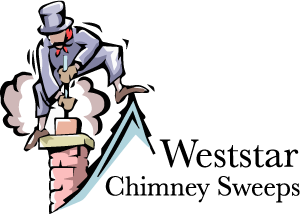by Mike O'Mara | Aug 30, 2014 | Chimney Maintenance

The National Fire Protection Association’s standard for chimneys and fireplaces calls for homeowners to have their system inspected and swept each year in order to keep the system as safe as possible. At Weststar Chimney Sweeps, we can make maintenance a breeze, and keep your system in top working order.
When you have a fireplace in your home, the most essential maintenance step you can do is hire a professional chimney sweeping company, such as Weststar Chimney Sweeps, to perform an annual cleaning of your chimney. This task ranks high in importance, as annual chimney sweepings prolong the life of your chimney as well as ensure the safety of your fireplace and chimney. The Chimney Safety Institute of America (CSIA) has published The Homeowner’s Guide to Chimneys, Fireplaces, and Woodstoves to provide helpful information for understanding how these heating systems work and how to properly maintain them. We would like to share some facts from this guidebook with you to help you understand why annual chimney sweepings are so important.
Removal of Chimney Deposits
According to the CSIA, there are three types of deposits that build up on chimney walls:
- Soot — Primarily composed of carbon particles and possibly ash remnants, soot can be highly flammable, depending on the concentration of soot and ash. Since ash is not combustible, a higher ash content in soot reduces its flammability.
- Creosote — Naturally formed during the condensation process, creosote is a highly flammable residue of the by-products of incomplete combustion. Varying in its appearance, creosote can be black or brown, hard and shiny, sticky and tar-like, or crusty and flaky. No matter what it looks like, creosote deposits are hazardous as they are one of the main causes of chimney fires.
- Glaze — The most difficult deposit to remove, this shiny, tarry substance creates a large amount of fuel to burn and poses a serious danger of a destructive chimney fire.
Removing these deposits is the major reason for annual chimney sweepings. Preventing chimney fires, eliminating chimney odors, ensuring proper venting to the outdoors, removing blockages that could cause toxic gases like carbon monoxide to enter the home, and stopping deterioration to chimney walls from the acids in these deposits are all accomplished during a professional chimney cleaning by removing buildups of soot, creosote, and glaze.
Discovering Essential Repairs
Another important reason to have your chimney swept once a year: CSIA-certified chimney sweeps, including our staff at Weststar Chimney Sweeps, will look at the exterior of your chimney for loose bricks and mortar and other signs of water penetration damage, examine the condition of your flue liner to check for cracks and deterioration, and monitor the venting system of your chimney to ensure the toxic by-products of combustion are exiting through the chimney. When we find any needed repair work, we can fix it for you. We specialize in crown repair, resurfacing, repairing, or replacing damaged flue liners, water leak repair and prevention, and customized repair or replacement of flashing where your chimney meets the roof.
While an annual chimney cleaning generally is sufficient to keep your fireplace and chimney safely maintained, more frequent chimney sweepings should be scheduled under certain conditions. The number of cleanings needed depends on the amount of time your fireplace is used, the installation of your fireplace, the type of fuel used for your fires, and your burning habits. Our chimney sweeps can tell you if your chimney needs to be cleaned more often than once a year.
If you have not scheduled your annual chimney sweeping yet, contact Weststar Chimney Sweeps today to schedule an appointment. Keeping your family safe from the dangers posed by a dirty chimney is one of the most important tasks on your home maintenance checklist.
by Mike O'Mara | Mar 25, 2014 | Chimney Maintenance
Spring: A Fresh Start for Your Chimney
You’ve done an excellent job in taking good care of your chimney during winter, but no matter how cautious you’ve been, there might still be things that happen inside the chimney that are just beyond your control. Winter might have left some damages behind that need to be inspected and fixed and have to be attended to right away. Our Chimney Safety Institute of America (CSIA) certified chimney sweeps from Weststar Chimney Sweeps would like to put your mind at ease.

Chimney cleanings and inspections are not DIY projects. Let the certified professionals put your fears to rest.
Parts & Systems
There are certain parts of the chimney which are vital in directing the smoke out the right way; parts like the:
- Flue
- Flue liner
- Damper
- Smoke Chamber
These parts help create draft inside the chimney. However, these are also the parts that are most prone to creosote buildup or other obstructions making it harder for smoke to go out. This opens doors to a lot of problems that will not only cost thousands in repairs, but may even cost you something more valuable—your health or even your life.
What to do
To prevent objects from entering the chimney, it’s best to have a chimney cap installed so that the inside of your chimney is protected from all the dangers that the outside world can bring. Some examples are animals, debris, spider webs and leaves.
Then there is water. This is one of the things chimneys hate the most because it destroys it—the performance and the structure. It can cause the brick walls to deteriorate. This problem can be prevented by waterproofing the chimney and repairing the flashing. We also make it a point to include the chimney crown in the inspection and repairs because when it is cracked, this can also be another entry point for water. These measures will help prolong the life of your chimney.
Even if you don’t use your chimney during spring, it’s best to keep animals and water out. Remember, it’s not just to prepare for the next winter season, we want to make sure that your chimney continues to be efficient for many years to come. Let us help keep your heating system in tip-top shape.
by Mike O'Mara | Oct 29, 2013 | Uncategorized
What To Expect From A Chimney Inspection
If you’re new to fireplace or stove and chimney ownership, the regular maintenance process may be a little daunting, since there’s a lot to think about, and the words “fire hazard” aren’t exactly soothing. You also may be picturing the soot-covered, ash dust-spewing chimney sweeps from the movies coming into your home with a sack of ratty brushes.
Regular chimney maintenance — particularly your annual chimney inspection — is important, both to ensure that your chimney system performs correctly, and performs as safely as it can. But when you hire the experienced, CSIA-certified technicians at Weststar Chimney Sweeps, it’ll be an easy, comforting and clean process, and we promise you won’t see a single sooty top hat.

We aim to get in with little muss & fuss and give you a detailed look at your chimney.
When Weststar Techs Visit For A Chimney Inspection:
First things first: Our techs protect your home. We’ll lay dropcloths all around the work area to ensure that no mess is left.
Before we perform a standard chimney inspection (what’s considered a Level 1 inspection in the National Fire Protection Association’s 211 standard), we’ll sweep the chimney, to make sure creosote and debris is removed and we can get a clear and clean look at the flue and the rest of the system.
Once the chimney is clean, we’ll inspect every accessible part of the interior and exterior, from the firebox up to the chimney cap, looking for damage that could cause leaks or fire hazards. When we’ve completed that process, we’ll have a clear understanding of the state of your system, and you’ll have a report outlining all our findings, including any recommendations for repairs or replacement, so you can make informed decisions about next steps, if they’re necessary.
When A More Thorough Inspection Is Necessary
There are a few instances when a more detailed inspection — or a Level 2 inspection — will be more appropriate. One is when your chimney system has changed (like adding a new appliance or flue liner); another is when a property is being bought or sold. If this is your first chimney inspection, there’s a good chance it’s because you’re about to buy a house, so Level 2 is likely what you should inspect.
The process covers everything included in a basic visual inspection, but adds parts of the chimney that are in basements or crawl spaces and attics, and video scanning, which offers a much more detailed look at the flue. And that detail is really important if you’re about to take on a chimney system as your own — we all want to know exactly what we’re buying when we make a major purchase, and a Level 2 inspection insures that you get the full picture.
If you have any questions about chimney inspections or any other kind of chimney care, Weststar is always here to help — just give us a call!



